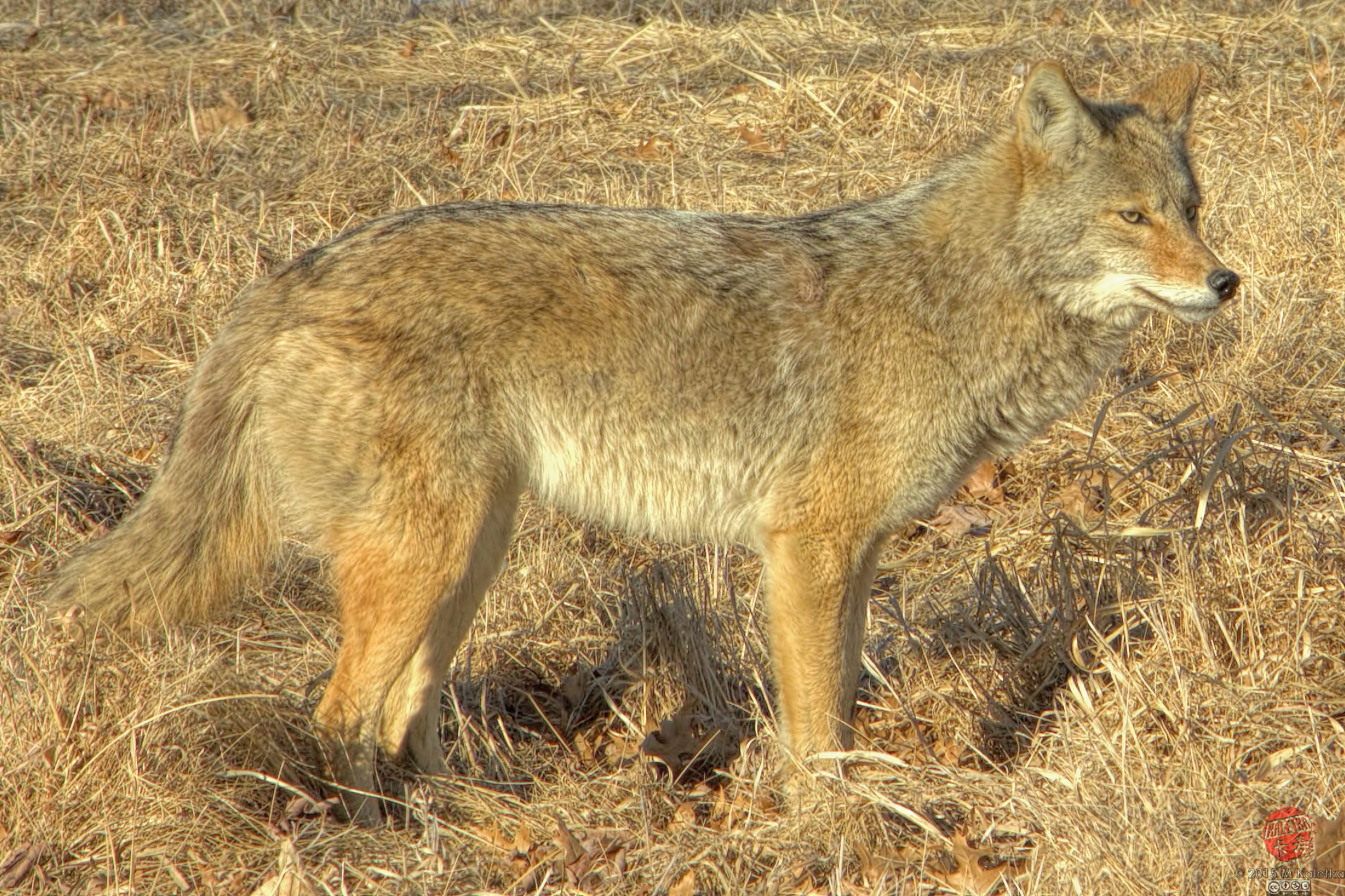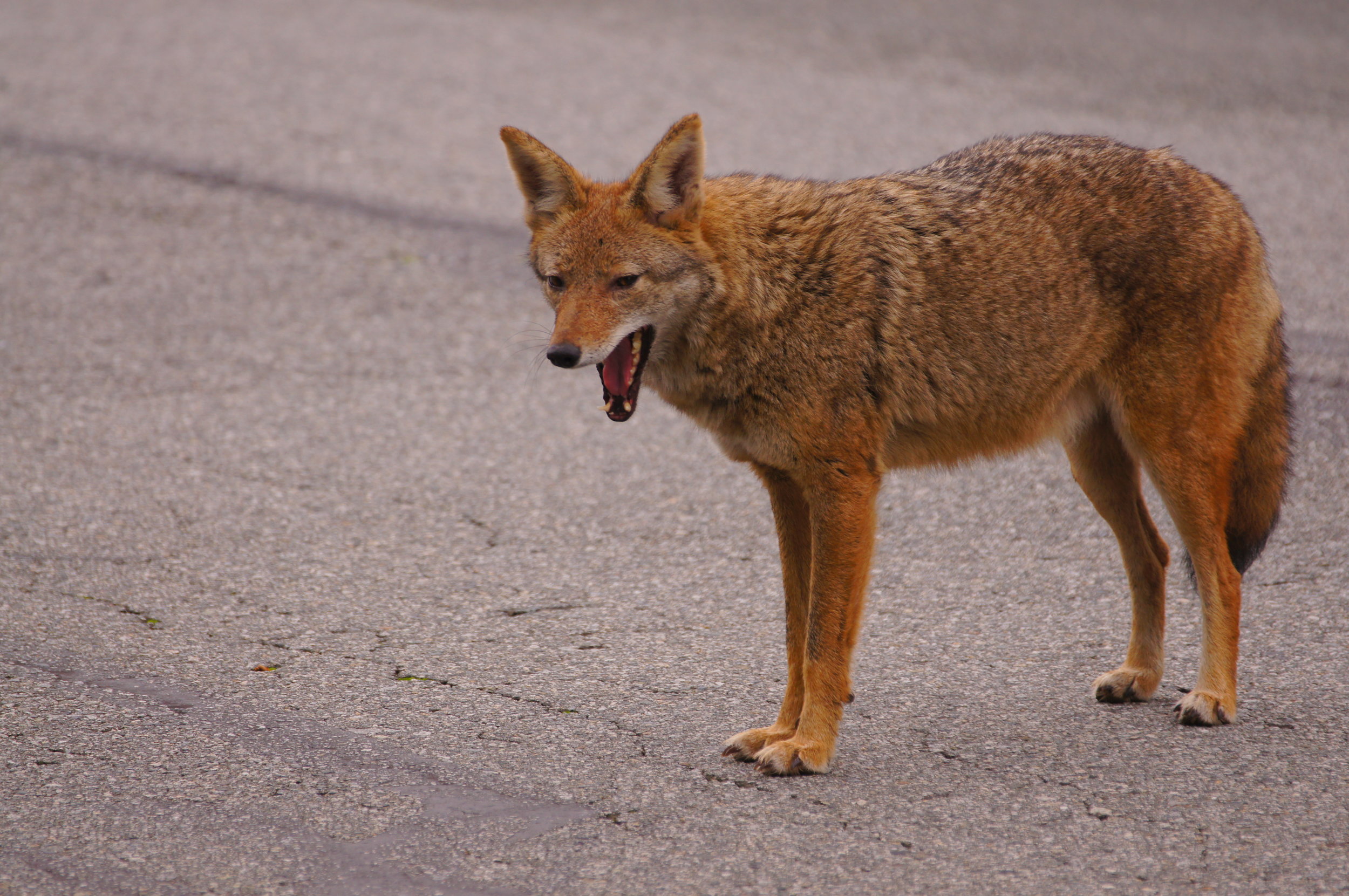Coyote
The coyote Canis latrans, also known as the American jackal, is a canid native to North America. It is smaller than its close relative, the gray wolf, and slightly smaller than the closely related eastern wolf and red wolf. It fills much of the same ecological niche as the golden jackal does in Eurasia, though it is larger and more predatory.
The coyote is listed as least concern by the International Union for Conservation of Nature due to its wide distribution and abundance throughout North America, southwards through Mexico, and into Central America. The species is versatile, able to adapt to and expand into environments modified by humans. It is enlarging its range, with coyotes moving into urban areas in the Eastern U.S., and was sighted in eastern Panama (across the Panama Canal from their home range) for the first time in 2013.
The coyote is more closely related to the common ancestor of wolves and other canids (more "basal") than the gray wolf. As of 2005, 19 coyote subspecies are recognized. The average male weighs 18 to 44 lb and the average female 15 to 40 lb. Their fur color is predominantly light gray and red or fulvous interspersed with black and white, though it varies somewhat with geography. It is highly flexible in social organization, living either in a family unit or in loosely knit packs of unrelated individuals. It has a varied diet consisting primarily of animal meat, including deer, rabbits, hares, rodents, birds, reptiles, amphibians, fish, and invertebrates, though it may also eat fruits and vegetables on occasion. Its characteristic vocalization is a howl made by solitary individuals. Man is the coyote's greatest threat, followed by cougars and gray wolves. In spite of this, coyotes sometimes mate with gray, eastern, or red wolves, producing "coywolf" hybrids. In the northeastern United States and eastern Canada, the eastern coyote (a larger subspecies, though still smaller than wolves) is the result of various historical and recent matings with various types of wolves. Most recent studies show that most wolves contain some level of coyote DNA.
The coyote is a prominent character in Native American folklore, mainly in the Southwestern United States and Mexico, usually depicted as a trickster that alternately assumes the form of an actual coyote or a man. As with other trickster figures, the coyote uses deception and humor to rebel against social conventions. The animal was especially respected in Mesoamerican cosmology as a symbol of military might. After the European colonization of the Americas, it was reviled in Anglo-American culture as a cowardly and untrustworthy animal. Unlike wolves (gray, eastern, or red), which have undergone an improvement of their public image, attitudes towards the coyote remain largely negative.

By Mark Kaletka. CC BY-NC-ND 2.0, via Flickr

By Tjflex2. CC BY-NC-ND 2.0, via Flickr
